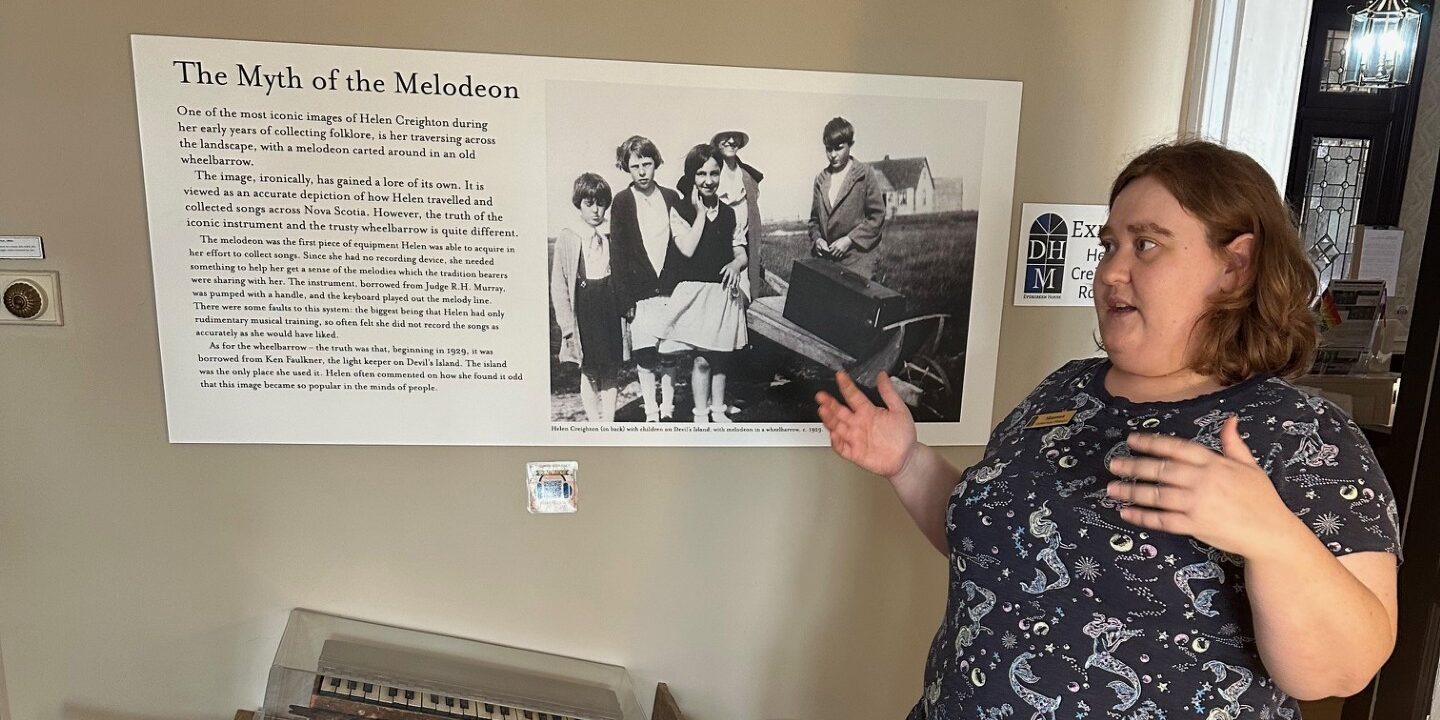Passport Places in Song: Where Music Meets Canadian History
Music has united people for millennia, serving as both expression and record of history. Canadian artists have long used song to capture the spirit of real events, people, and places. One of the best-known examples is Gordon Lightfoot’s The Wreck of the Edmund Fitzgerald, which turned a Great Lakes tragedy into an international ballad. Other Passport Places have inspired songs too — from traditional folk ballads to hits by icons like Leonard Cohen and Stan Rogers. So put on your headphones, press play, and explore these remarkable places through the songs that keep their stories alive.
Featured photo: The Melodeon, at Evergreen House. Photo credit: Sonja Kruitwagen.
Beothuk Interpretation Centre, Boyd’s Cove, NL

Courtesy of Provincial Historic Sites – Newfoundland and Labrador
Beothuk Interpretation Centre honours the legacy of the Beothuk, an Indigenous people who lived in Newfoundland in the past, through interpretation, the Spirit Tree, and a hiking trail that leads to the preserved Beothuk settlement.
Great Big Sea released a song called Demasduit’s Dream on their album Turn (2000), where the singer recounts having seen a woman, Demasduit, waiting for her people to return to her. Demasduit was a real Beothuk woman who was taken captive by settlers in 1818-1819. In her captivity, Demasduit compiled a Beothuk dictionary, which is today an invaluable resource for scholars and historians. Demasduit died in 1820, likely of tuberculosis. Since 1827, the skulls of Demasduit and her husband, which were taken by settler William Cormack, have been in National Museum of Scotland. They were finally repatriated in 2020 after many years of advocacy by Chief Mi’sel Joe of Miawpukek First Nation.
Visitors to the Beothuk Interpretation Centre are welcomed to remember the Beothuk and imagine what the archaeological site might have been like when the Beothuk lived there. The site also features a sculpture by Gerald Squires that memorializes the Beothuk.
Visit their website to learn more.
Battlefield, Stoney Creek, ON
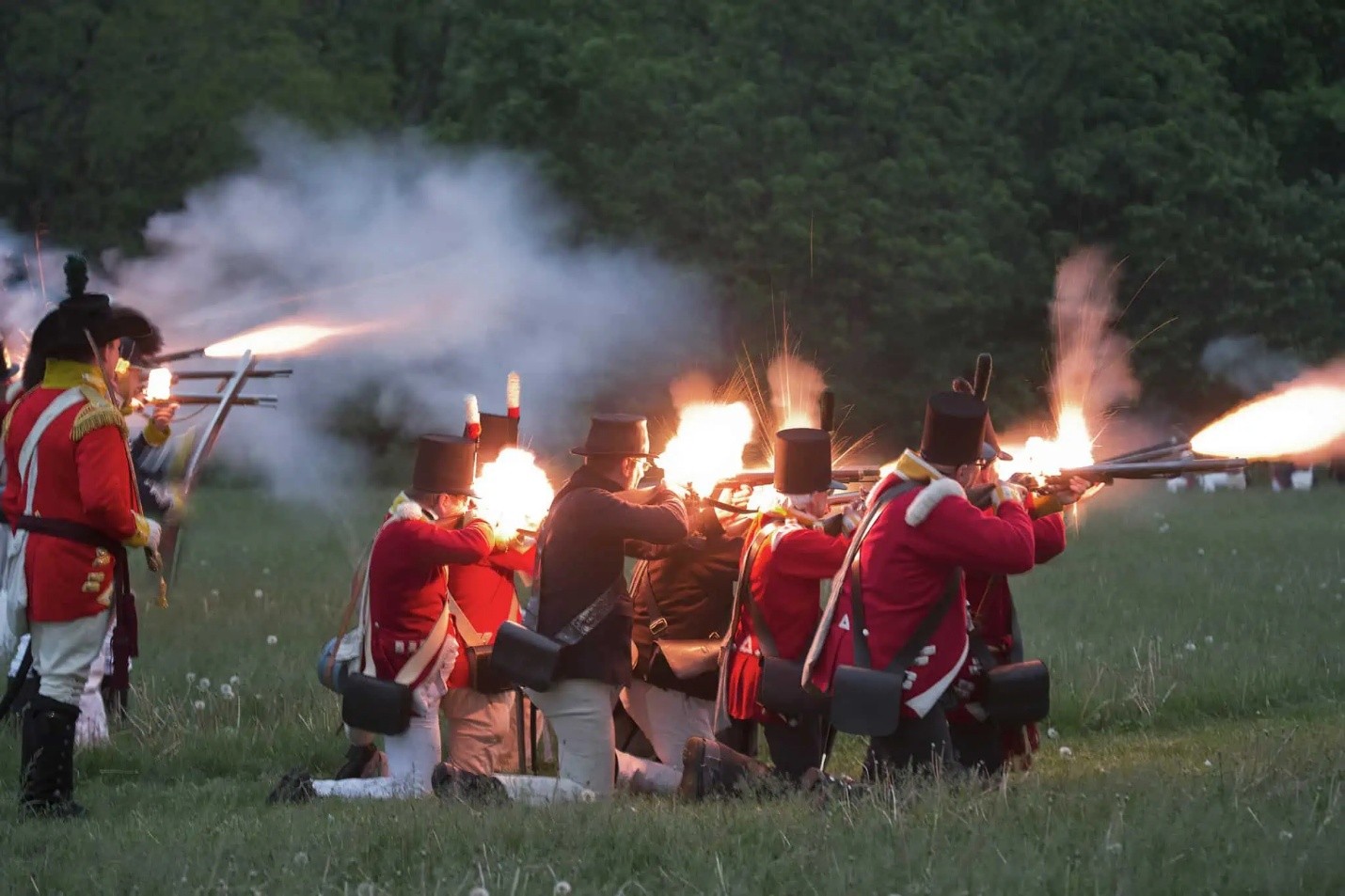
Courtesy of City of Hamilton
The site of one of the most decisive battles of the War of 1812, Battlefield is also the former home of the Gage family and commemorates the Battle of Stoney Creek which was fought in June 1813. On the night of June 5, the Americans had camped on the Gage’s property as they waited to advance further toward Burlington. However, when Billy Green gained critical information about the American camp, he rushed on horseback to Burlington Heights to notify the British Army who were stationed there. According to Green’s grandson, Green was asked to lead the British through the forest to where the Americans were camped. With Green’s intelligence, the British were able to attack the Americans as they slept, resulting in a decisive victory for the British.
Green, who is also known as the Paul Revere of Canada, was immortalized in a song by Stan Rogers titled Billy Green. The song shares Green’s perspective of that night in June 1813.
Today, visitors to Battlefield can view monuments to the War of 1812 and visit the Gage’s former home, around which the Americans had set up camp.
Visit their website to learn more.
Conception Bay Museum, Harbour Grace, NL
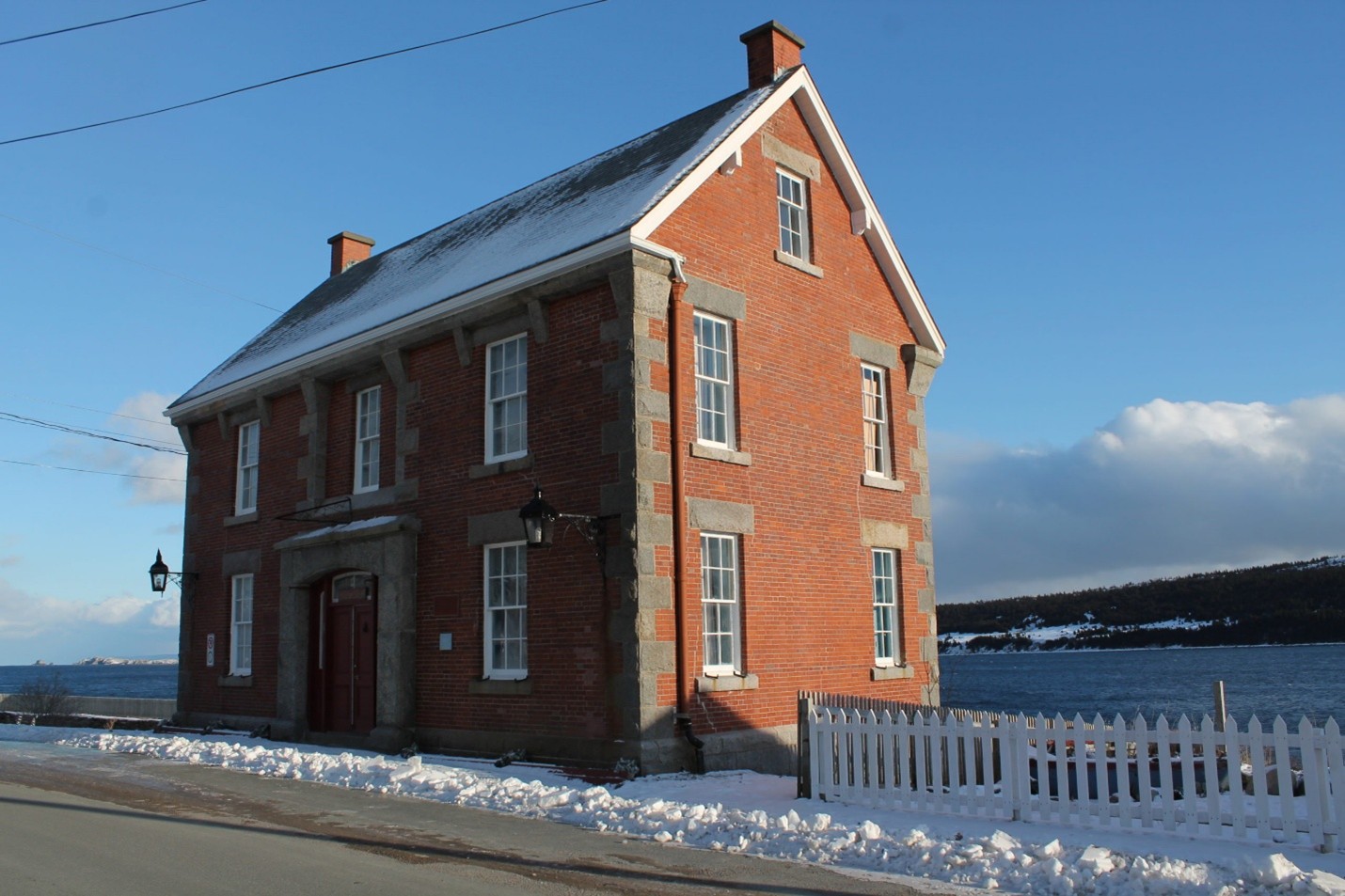
Courtesy of Conception Bay Museum
This museum, which is housed in the former 19th-century Customs House, is dedicated to the history of pirates, aviation, and mercantilism in Habour Grace. Harbour Grace has a long history related to piracy and exploration, but one of the most famous explorers and trailblazers to pass through this Newfoundland town is Amelia Earhart. Earhart, Ed Gorski, and her mechanic Bernt Balchen, arrived in Harbour Grace in May 1932 as she prepared to “challenge the Atlantic” and cross the Atlantic as a pilot, without the assistance of any controls. Earhart took off from Harbour Grace and landed in Culmore, north of Londonderry 14 hours and 56 minutes after her departure from Newfoundland, making her the first woman to fly solo across the Atlantic. Earhart’s logbook, which she signed before departing, is on display at the museum.
Joni Mitchell sings about Earhart on her song, Amelia, which according to Mitchell herself is a reflection on the cost of being a woman and having something you feel that you must do. It is sung from the perspective of one pilot to another.
The Conception Bay Museum honours Earhart’s record-breaking flight, as well as others who have contributed to aviation and piracy in Harbour Grace including pirate Peter Easton.
Visit their website to learn more.
Duncan Train Station, Duncan, BC
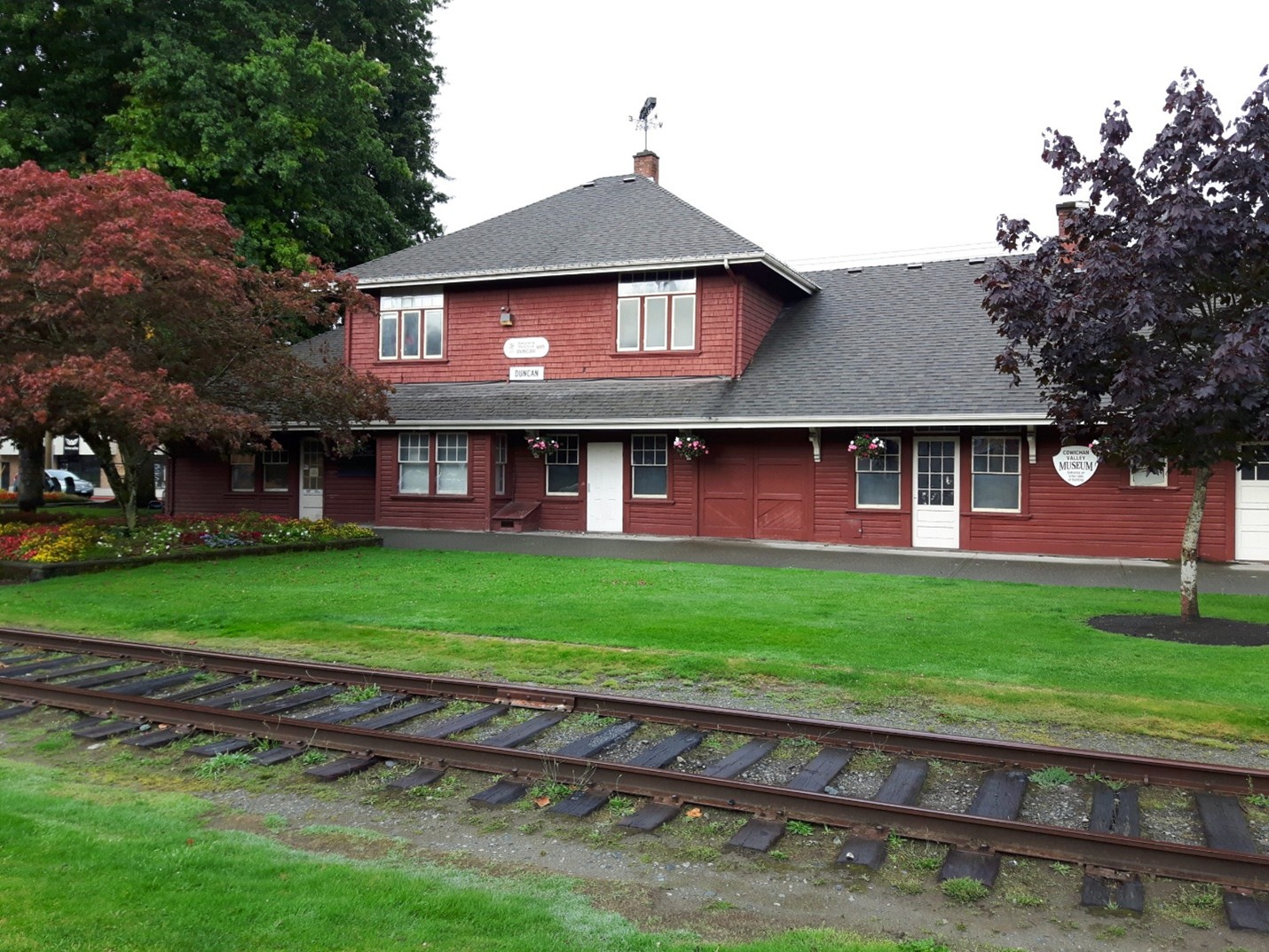
Courtesy of Duncan Train Station
The Duncan Train Station was constructed over 100 years ago and is a former Canadian Pacific Railway (CPR) station. This two-storey building included a living quarters for the station agent and is reflective of the role that the railway played in the economy of Vancouver Island.
Gordon Lightfoot’s song Canadian Railroad Trilogy (1967) reflects upon the construction of the CPR and the myriad of ways that the railroad changes the landscape of the country. CPR, which today spans over 20,000 kilometers of railway tracks, began construction in 1875, as part of John A. MacDonald’s Conservative government’s National Dream. Lightfoot’s song is sung from the perspective of the workers who built the railway, and while the song evokes the optimism of the rail age, it also evokes the human cost of railroad construction and the effort of manual laborers.
Duncan Train Station closed as an active train station in 2011, and has been the home of the Cowichan Valley Museum and Archives since. The museum preserves the legacy of the train station and the economic impact it had on Duncan, as well as other aspects of local history.
Visit their website to learn more.
Evergreen House, Dartmouth, NS
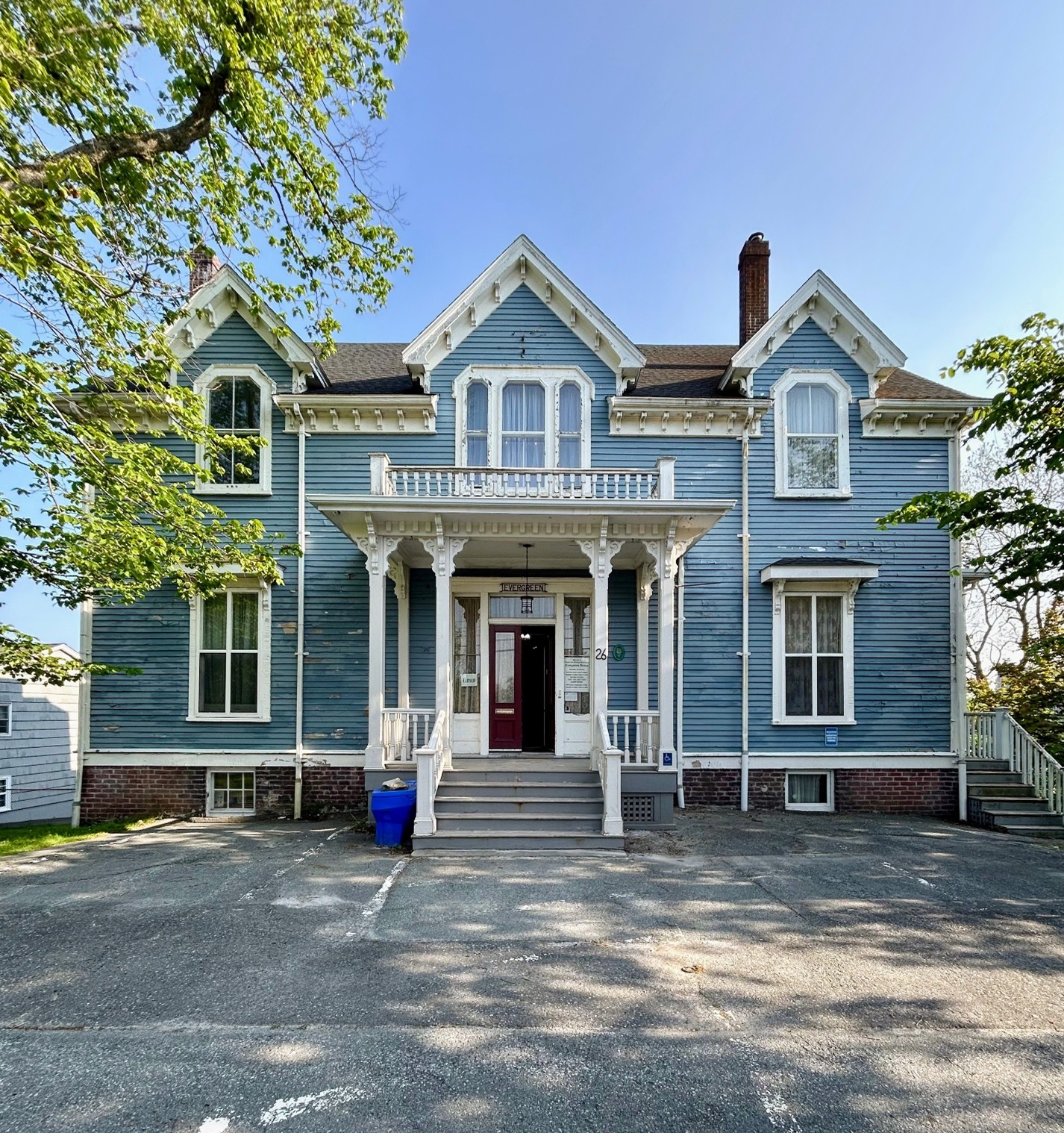
Courtesy of Dartmouth Heritage Museum
Evergreen House is the former home of Canada’s First Lady of Folklore, Helen Creighton, who collected over 4,000 traditional stories, beliefs and songs from across the Atlantic provinces. Creighton would often travel alone — once even lugging her metre-long melodeon atop a wheel barrow — as she travelled to remote regions across the Maritimes.
One of Creighton’s many contributions is her recording of the Nova Scotia Song, which is also widely known as Farewell to Nova Scotia. The song, which is adapted from the 1791 Scottis lament The Soldier’s Adieu, was collected by Creighton in 1933 from Annie Greenough. The song was popularized in 1964 when Catherine McKinnon used it as the theme-song for the popular CBC television program Singalong Jubilee. A popular folk song, it was also recorded by Stompin’ Tom Connors, Wild Mountain Thyme, and more. It is the official song of Nova Scotia.
Evergreen House shares stories from Helen Creighton’s career as a folklorist, and also documents the history of the house beyond Creighton’s life.
Visit their website to learn more.
Papineau Chapel, Montebello, QC
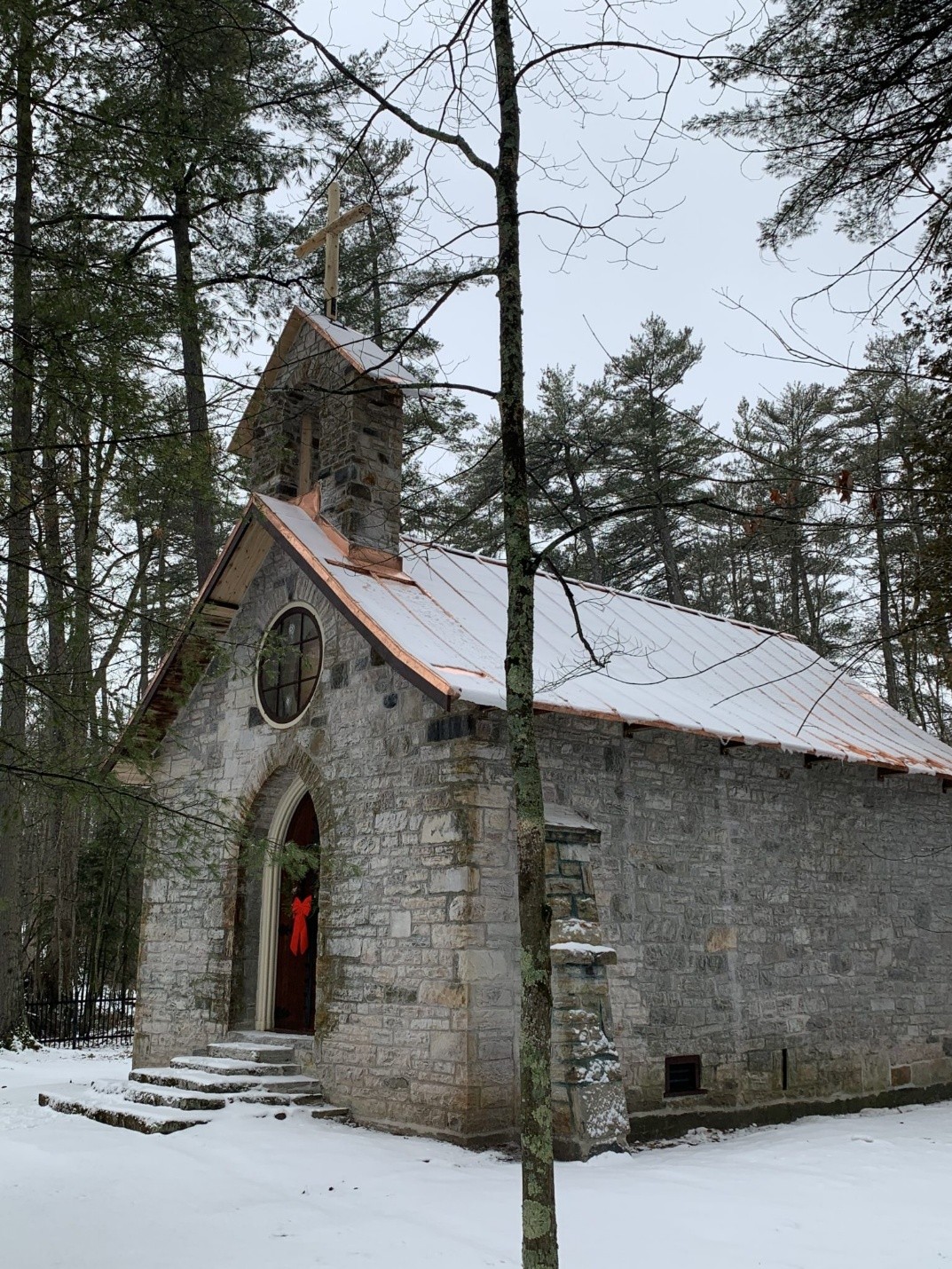
Courtesy of the National Trust for Canada
This historic chapel was built between 1853 and 1855 by Louis-Joseph Papineau. Papineau was a leader in the 1837 Rebellion, which aimed to bring about political reforms to guarantee a responsible government and to protect French-Canadian interests. Following the rebellion, Papineau was forced into exile and returned to Canada in 1844 when he was granted amnesty.
Un Canadian Errant, which translates to The Lost Canadian, is a folk song written by Antoine Gérin Lajoie in 1842. Though the origins of the song are clouded in sentimentality, and there are many stories of where the song originated from, Gérin-Lajoie said he set the song to the tune of an already-existing folk song. The identity of that original song remains unclear, with conflicting reports about its source. The song became one of great importance to those who were exiled from Canada following the 1827 Rebellion in Lower Canada, and it also gained importance among exiled rebels from Upper Canada and among Acadians, within the context of Acadian Expulsion in the 18th century.
The song has been recorded many times over the centuries, including by Nana Mouskouri and by Leonard Cohen. It has also been inducted by the Canadian Songwriters Hall of Fame.
Papineau Chapel, constructed by Papineau after returning from his exile, is a rare example of a family funerary chapel on private property, and was constructed using local materials. Recently restored by the National Trust for Canada, the chapel is open to the public during the summer months; please check opening hours before visiting.
The above historic sites are part of the Trust’s Passport Places program, a National Trust membership benefit that provides free access to over 100 historic places in Canada, as well as 1000+ National Trust places abroad. Become a member today!

